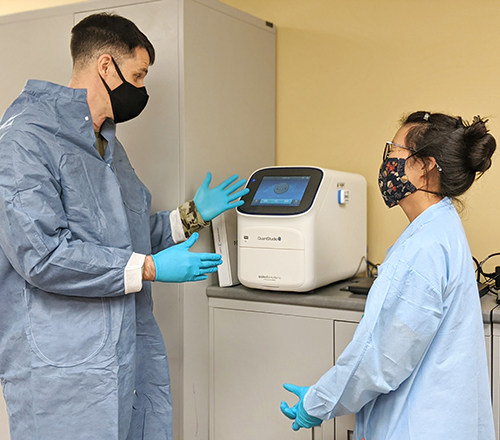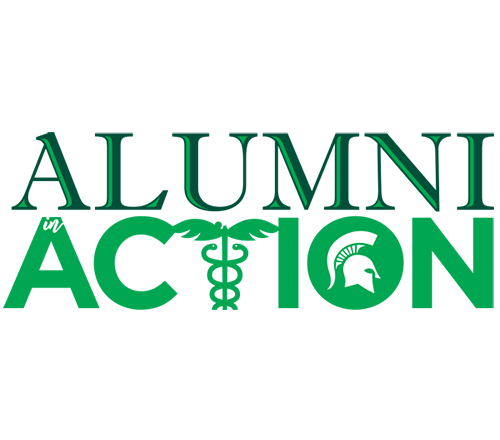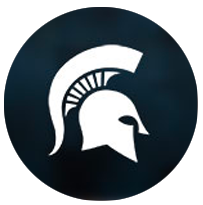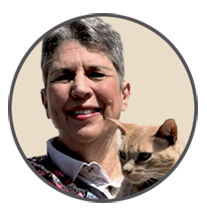



Veterinary medicine is a field full of diverse career opportunities. From animal care and food safety to public health and forensic science, veterinarians permeate the world around us, where they help protect the safety, health, and wellbeing of animals and humans everywhere.
Spartan veterinarians are no different. Alumni from the MSU College of Veterinary Medicine are responding to COVID-19 and reflecting on their time at MSU. These are just some of their stories.

“Since 1992, I have been working with academic institutions, regulatory agencies, and pharmaceutical and biotech companies to develop novel treatments and diagnostics in a variety of roles. One of my current roles is senior strategic advisor for the Montreal Heart Institute Coordinating Center (MHICC). MHICC recently demonstrated that an inexpensive and widely available anti-inflammatory medication, colchicine, was safe and effective for treating heart disease in a large, controlled clinical trial (COLCOT). Based on the mechanism, this medication is now being evaluated to prevent the cytokine storm associated with COVID-19. The study is being partially funded by the Bill and Melinda Gates Foundation and National Institutes of Health. It is being conducted at various hospitals across the US and Canada in a unique way to avoid patient hospital visits.
“The MSU College of Veterinary Medicine provided me with the scientifically rigorous medical knowledge I needed to excel in drug development and clinical research, an area that is typically more hospitable to human medicine doctors. MSU also provided a great platform to develop a variety of tools needed for this work including curiosity, creativity, communication, and attention to detail.”

“After graduating with my DVM from MSU, I practiced for a few years and then went on to pursue a Master of Public Health at the University of California, Berkeley. I was introduced to the field of epidemiology and the role of veterinarians in public health by Dr. John Kaneene and Dr. Paul Bartlett, and Dr. Bartlett inspired me to become an epidemic intelligence service officer with the Centers for Disease Control and Prevention. After that, I ended up at my current position as the public health veterinarian for the New York City Health Department. I have been serving as a lead in the health department’s response effort to COVID-19, and have been involved in the investigation of the tigers and lions diagnosed with SARS-CoV-2 infection.”

“My education at MSU is the basis for all that I do. During the pandemic, I definitely relied on the lessons I learned at vet school. At Bennett Road Animal Clinic, Inc. in Okemos, Michigan, we went through what many clinics went through, as far as slowly phasing in services. We started with only curbside service and later allowed clients to enter our clinic one at a time, if they like. We postponed non-essential services like spays, castrations, and ear crops until the governor allowed us to resume them. We also started telemedicine and two-way texting, implemented extra precautions, and set up a mandatory health screening system for all clinic employees including myself—daily temperature readings, social distancing, required hand sanitizer use and temperature screenings for clients, and plexiglass screens. Another important resource that helped protect our clinic and our patients is that I was able to get a paycheck protection program loan, so I have been paying my employees this whole time, even when they were out sick. "COVID-19 has been a challenge, but we are weathering it together and adapting as the situation evolves to do what’s best for our staff and clients.”

"Testing for COVID-19 has been hindered by logistical problems. COVID-19 testing utilizes a nasopharyngeal (NP) swab administered by trained healthcare workers. NP sampling exposes the healthcare workers to potentially infectious aerosols, which necessitates that the worker must be protected with an N-95 respirator and full personal protective equipment (PPE). At the Everett Clinic in Everett, Washington, we decided to see how patient-administered nasal, mid-turbinate, and tongue swabs compared to traditional NP swabs administered by healthcare workers. Our study demonstrated that self-collected nasal swabs were just as sensitive in detecting COVID-19 as NP swabs collected by healthcare workers.”
“The implications of our work are important—it opens the door for home testing. This self-administered swab test would be a much more convenient and less expensive way to test greater numbers of people, especially those who may not have access to current testing options. If people can test themselves, they won’t have to rely on accessible testing stations or even PPE availability. Self-administered tests also are much easier and far less uncomfortable to experience than the nasopharyngeal swabs currently used. So, people may feel more inclined to test themselves without the fear of pain or discomfort. Self-testing doesn’t require people to gather in physical spaces, which also may help slow spread of the virus. Nasal collection saves PPE, exposure to health care workers, and is a lot faster and more patient-friendly compared to NP swabs. The publication of this study will help healthcare organizations move away from NP collection to nasal collection.”
Listen here: https://www.nejm.org/action/showMediaPlayer?doi=10.1056%2FNEJMdo005792&aid= 10.1056%2FNEJMe2021023&area=
Read the publication here, New England Journal of Medicine: https://www.nejm.org/doi/full/10.1056/NEJMc2016321?query=featured_home

“My time has largely been spent helping to coordinate the US Army Public Health Command’s response to COVID-19 within its area of responsibility. We’ve helped improve testing, tracing, and reporting. We’ve also helped improve testing capabilities by moving key specialists and equipment to support COVID-19 testing in military hospitals. Moving forward, we’re looking at options to conduct wide-spread surveillance testing for military forces throughout our area of responsibility so we can ensure a healthy fighting force.
“We also have trained personnel in contact tracing to quickly identify potentially infected persons. Having a robust contact tracing program is essential to preventing the spread of COVID-19, which is important to assuring our state and local governments that the military is a responsible partner in disease prevention. Speaking of which, we also assisted with improving disease reporting systems to ensure military leaders and local public health officials have accurate information for making decisions.
“We have assisted military installations in the development of responsible plans for the return to normal. In our location, that means coordinating public health recommendations, not only with the State, but across the military services. We have all five Armed Forces in the region, so it’s important to provide military leaders with a single public health message and guidance so they can, in turn, provide consistent messaging to the general military populations on their bases. At our installation, we’ve formed a Joint Emergency Public Health Working Group so medical personnel and installation emergency management operators can discuss ongoing issues and plans to develop a common way forward.

“My time at MSU taught me the value of teams and teamwork. Back when I was in veterinary school, we had a course called Veterinary Integrative Problem Solving. As a group of first- and second-year students, we worked through a case to come up with a list of rule-outs and tests, identify the most likely diagnosis, and create a therapy plan. None of us were smart enough to do it alone, but we could do it as a group. Responding to COVID-19 is very similar. None of us have all the answers, but collectively, we are able to provide sound recommendations to protect the public and the military while still ensuring our military can accomplish its missions.”

Know someone who will enjoy this story?
Send it their way!